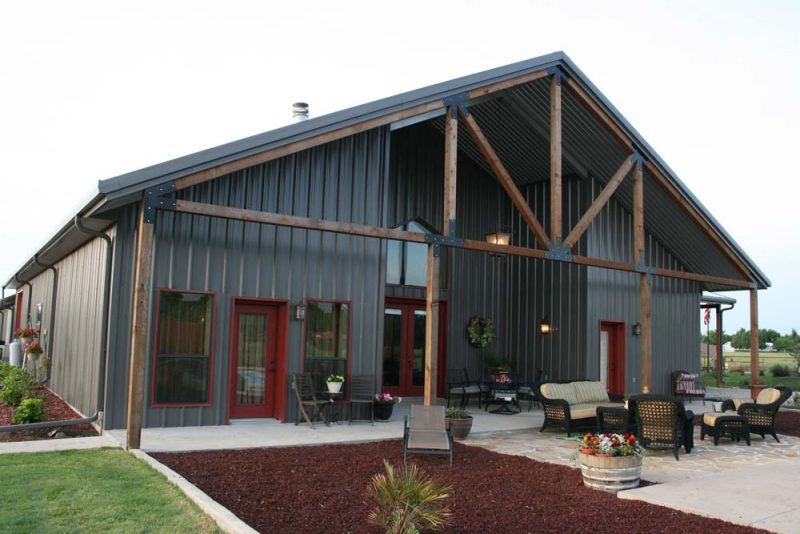Metal-building homes, also known as steel homes or metal homes, are becoming increasingly popular among homeowners. These homes are made from prefabricated steel frames, which are then assembled on-site. While there are many advantages to metal building homes, there are also some drawbacks to consider. In this article, we’ll take a closer look at the pros and cons of metal-building homes.
Pros of metal building homes:
Durability: One of the biggest advantages of metal building homes is their durability. Steel is a strong material that can withstand harsh weather conditions, such as high winds and heavy snow. Additionally, metal does not rot, warp, or crack like wood, which can make it a better option for long-term durability.
Energy efficiency: Metal building homes can be designed to be very energy efficient. They can be insulated to help keep heat inside during the winter and outside during the summer, which can lead to lower heating and cooling costs. Additionally, some metal building homes are designed with passive solar heating, which can help reduce energy bills even further.
Customizable: Metal building homes can be customized to suit the specific needs and preferences of the homeowner. They can be designed in a variety of sizes and styles, with a range of different features, such as windows, doors, and roof types. This means that metal-building homes can be tailored to fit any budget and lifestyle.
Low maintenance: Metal building homes require very little maintenance. Unlike wood, metal does not need to be painted or sealed, which can save time and money over the life of the home. Additionally, metal is resistant to pests and insects, which can be a common problem in traditional homes.
Eco-friendly: Metal building homes can be eco-friendly. Steel is a recyclable material, which means that it can be reused and repurposed at the end of its life. Additionally, metal building homes can be designed with eco-friendly features, such as rainwater harvesting systems and solar panels.
Cons of metal building homes:
Cost: While metal building homes can be affordable, they can also be more expensive than traditional homes. The cost of a metal building home depends on several factors, including the size of the home, the features included, and the location of the home. Additionally, some homeowners may need to pay extra for insulation, wiring, and plumbing, which can add to the overall cost.
Limited design options: While metal building homes can be customized to some extent, they may have limited design options compared to traditional homes. For example, metal building homes may be more difficult to design with unique architectural features, such as curved walls or elaborate trim.
Noise: Metal building homes can be noisy. Steel is a conductive material, which means that it can transmit sound more easily than wood or other materials. This can be a problem if the home is located near a busy road or other noisy areas.
Appearance: While metal building homes can be designed to look like traditional homes, some people may find the appearance of metal homes to be unattractive. Additionally, metal homes may not fit in with the architectural style of the surrounding neighborhood, which can be a concern for some homeowners.
Construction: Metal building homes require a specialized construction process. The steel frames must be prefabricated off-site and then assembled on-site, which can be a time-consuming and complex process. Additionally, some builders may not have experience working with steel frames, which can lead to mistakes and delays.
Conclusion:
Metal building homes offer several advantages, including durability, energy efficiency, and low maintenance. Additionally, they can be customized to suit the specific needs and preferences of the homeowner. However, there are also some drawbacks to consider, including cost, limited design options, and potential noise issues. Ultimately, whether pros and cons of metal building homes.

